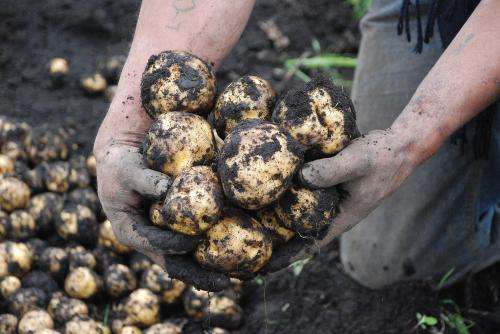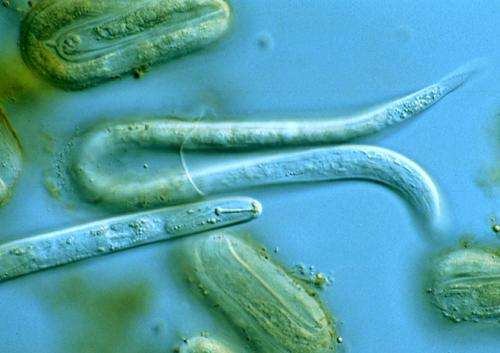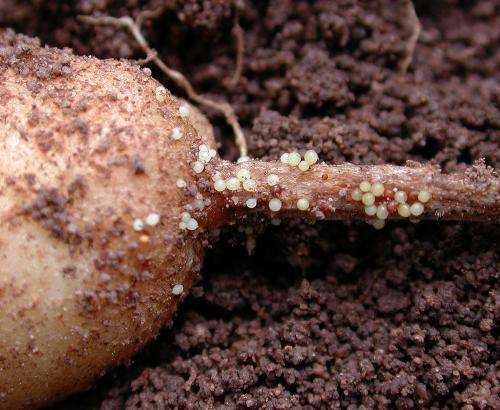Potato ravaging pest controlled with fungi

Approximately six thousand hectares of Veracruz, in the west coast of Mexico, are dedicated to the production of potato (Solanum tuberosum). During the past 30 years, the fields of the Cofre de Perote area were affected by the presence of the golden nematode (Globodera rostochiensis) reducing performance of the crop by more than 40 percent.
According to records of the Institute of Ecology (INECOL) in Mexico, there were six thousand cysts per kilogram of soil of the nematode, when the recommended amount by the European Organization for the Protection of Plants to not affect the crop yield is of just 40 cysts; the only options for control of the pest farmers have had are highly toxic chemicals, many of them severely restricted.
Faced with this problem, researchers from the Network of Biodiversity and Systematics at INECOL, effectively located and tested a fungus capable of feeding from the nematode,acting as a biological pest control method. The use of chemicals ceased and agriculture in the region improved.
Because of its importance at a global level, the bionematicide was intellectually protected and has a patent pending for Europe, United States and South America; explains Gloria Carrión Villarnovo, head of the scientific project.
Plant parasitic nematodes are microorganisms that feed on the nutrients absorbed by the roots of plants; in the case of potatoes, instead of producing eight or ten tubers, an infected plant generates only four or five, and of a smaller size than usual.
"Mexico is considered the second center of origin of the potato, after Peru. When studying the case we saw that in the mountainous area of Cofre de Perote wild tubers are present and that the region could have fungal antagonists for the golden nematode; after a scan we found some in 2005 that could be potential biological control agents.

"The process was accelerated because we saw that agrochemicals were handled carelessly, even by children, in addition that the compounds went into the groundwater through runoff or stayed in the tubers, making the damages greater" relates the scientist at INECOL.
"From the laboratory phase spent we went to the countryside, where fungi were were tested, until we found one that worked and which reduced up to 90 percent of the golden nematode population in two years by combining biological control with other methods for an integrated management."
According to Carrion Villarnovo, funding opportunities were sought and the National Council for Science and Technology (CONACYT ) through the Sectoral Innovation Fund, was the organization that supported the project. With these resources a patent was requested and a 15 liter bioreactor was acquired to reproduce the fungus that was used in the experiments. "We are on track to scale fermentation and produce it massively" the researcher highlighted.

She also mentions that the science team at INECOL also works in changing habits and customs of farmers that favor the introduction and spread of agricultural pests and diseases, mainly in the region of the Cofre de Perote; this techniques can also be implemented in the regions where potatoes are grown and the golden nematode is present.
The Biodiversity and Systematics Network is currently studying the major pest problems for the bean (Vicia faba), one of the crops used for rotation in the highlands of the state, using the same bionematicide and some other biocontrol agents.
"In Mexico we have the knowledge to deal with this kind of problems and to perform research focused on the generation of biological pesticides, which is a very important issue for agriculture due to the increasing restriction on the use of chemical pesticides," says the INECOL scientist.
Provided by Investigación y Desarrollo


















